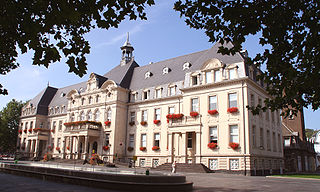Dudelange, Luxembourg’s fourth-largest city, offers a unique blend of industrial heritage and natural beauty. Nestled in the southern part of the country, it serves as a fascinating gateway to the Red Lands, characterized by vibrant red soil. Visitors are captivated by the city’s rich history, notably its steel industry, with numerous preserved sites and museums detailing its past. The surrounding landscapes provide a picturesque backdrop, ideal for hiking and nature walks. Dudelange’s multicultural atmosphere, fueled by its diverse population, adds to the city’s charm, offering an array of cultural festivals and culinary delights throughout the year.
Consider visiting the National Audiovisual Center in Dudelange to explore Luxembourg’s rich media history through intriguing exhibitions and archives.
Plan your visit during the annual Fête de la Musique in June for a vibrant experience of Dudelange’s lively music scene and cultural festivities.
Dudelange: A Blend of Legacy and Modernity
| Country | Luxembourg |
| Time in Dudelange | GMT+2 |
| Language spoken | Luxembourgish |
| Population | 20,003 (source: City Population 2023) |
| Currency | Euro (€, EUR) |
| Airports |
|
Dudelange, nestled in the lush rolling hills of southern Luxembourg, balances its rich industrial past with vibrant cultural present. Once a steel-producing powerhouse, today Dudelange is known for its thriving arts scene, diverse community, and expansive green spaces that offer a serene escape from the bustling city life. Historical landmarks, like the Mont Saint-Jean Ruins, intertwine with modern artistic expressions found at the Center for Contemporary Art. Throughout the year, the city bursts with festivals that celebrate its multicultural fabric.
Where is Dudelange?
Situated in the southern part of Luxembourg, Dudelange lies close to the French border, enhancing its multicultural vibe.
Distances:
| Route | Distance by car | Time by car |
| Luxembourg City to Dudelange | 10 miles (16 km) | 20 minutes |
| Esch-sur-Alzette to Dudelange | 8 miles (13 km) | 15 minutes |
What is Dudelange famous for?
Dudelange is celebrated for its rich industrial heritage, particularly in steel production, and its vibrant cultural scene that includes music festivals and art exhibitions, making it a key cultural hub in the region.
History
Pre-19th Century
The region around Dudelange, which is now known for its bustling community and rich histories, was originally inhabited by Celtic tribes before the Roman conquest. These early inhabitants capitalized on the fertile lands and strategic location. Over the centuries, the area witnessed numerous power shifts, particularly during the Middle Ages when it was part of the Duchy of Luxembourg under the control of various European powers.
19th Century – Early 20th Century
The modern foundation of Dudelange as a town occurred in the 19th century, closely tied to the industrial boom, particularly in the steel industry. The development of blast furnaces around 1900 transformed the sleepy agrarian areas into one of Luxembourg’s major industrial hubs. This era marked significant population growth and economic development. Throughout the early 20th century, Dudelange continued to thrive economically, shaping its identity as a crucial industrial town in the region.
Mid-20th Century
The Second World War was a testing period for Dudelange, with the town being at the forefront of several conflicts. Post-war reconstruction and a shift towards modern industrial processes marked this era. The decline of coal and steel industries in the late 20th century forced the town to diversify its economic base and focus on service sectors and new technologies.
21st Century
Today, Dudelange is known for its vibrant culture and diverse population. It has transformed from an industrial town to a center of art and culture, hosting several high-profile events and festivals. The town has also invested in preserving its historical heritage while promoting sustainable development and integration with European markets, making it a significant player in the region’s economic landscape.
Visit Dudelange
What to see and do in Dudelange
In Dudelange, visitors can explore a variety of attractions that showcase both its rich industrial heritage and its vibrant cultural scene. Key sites include the National Audiovisual Centre, which offers insights into the multimedia arts, and the Dudelange City Museum, which provides historical context about the town’s industrial past. The Neischmelz cultural site also deserves a visit, where you can engage with contemporary art and performances. For nature lovers, the Haard Nature Reserve presents a perfect escape with its lush trails and biodiversity.
Festivals and Events in Dudelange
Throughout the year, Dudelange comes alive with various cultural and musical festivals. Noteworthy events include the annual Dudelange on Wheels, a dynamic sports festival featuring skateboarding and BMX competitions usually held in summer. Another highlight is the Fête de la Musique, celebrating live music performances across multiple genres every June. These events reflect the town’s lively communal spirit and provide entertainment for all ages.
Best time to visit Dudelge
The best time to visit Dudelange is from late spring to early autumn, particularly from May to September, when the weather is most favorable for exploring the outdoors and participating in local events. This period also coincides with some of the town’s major cultural festivals, providing visitors with a glimpse into the local traditions and vibrant cultural scene.
Is Dudelange worth visiting?
Dudelange offers a unique blend of historical sights, cultural activities, and natural beauty, making it a worthwhile destination for travelers. While its industrial past enriches its character, its commitment to arts and cultural events adds a modern appeal. However, compared to Luxembourg City, Dudelange might seem less vibrant in terms of nightlife and high-end dining options. The town is best suited for those interested in history, culture, and nature, rather than those seeking a bustling urban environment.








